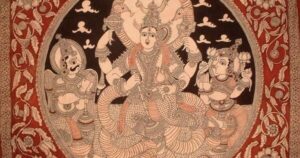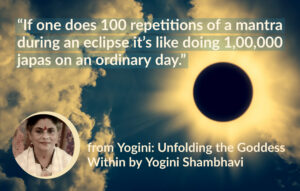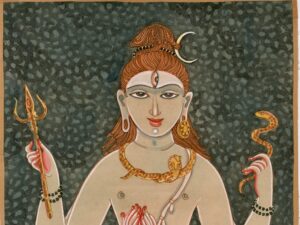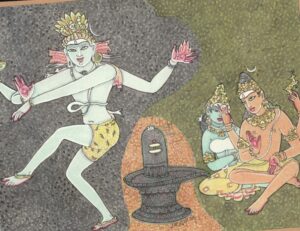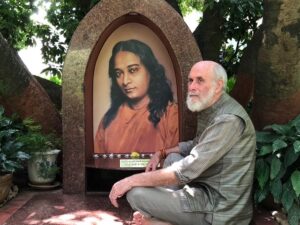Yoga is not a new phenomenon but the essence of the spiritual and cultural traditions of India going back to the earliest eras, with connections throughout the world and all of human history. Yoga is a great treasure and heritage with benefits for all countries that are now becoming obvious.
Yogic ideas and practices can be found in all India’s dharmic traditions, its philosophies and sciences, its diverse art forms, music and dance, and in the general culture of the people down to the village level, with variations in every state and language in the country. The culture of India is largely a culture of Yoga.
Yet Yoga to some degree or in some aspect can be found wherever India’s great civilization has spread, including Southeast, East and Central Asia, as well as where India’s people have migrated, traded, traveled or taught. This now extends to the entire world.
Health, balance and well-being are common themes in Yoga texts and teachings of all types. Yoga is meant to help us discover inner peace and happiness, and to better know and master our lives, not just in a temporary but also in an enduring manner.
In this regard, Yoga as a healing practice is intimately connected with Ayurvedic medicine, the traditional natural healing system of India. Like Yoga, Ayurveda historically has been widely adapted throughout India and has now followed the spread of Yoga throughout the world.
The goal of Yoga, which is shared by Ayurveda, is the complete elimination of suffering for both body and mind, which requires right living and right awareness on all levels of our lives, both individually and collectively.
Yogic Texts and Teachings
The main text of the Yoga tradition, the Yoga Sutras defines Yoga primarily as control of the mind, meditation and samadhi (citta vritti nirodha in Sanskrit). Yoga and meditation are closely related concepts. This yogic approach to meditation provides a sound basis for mental health and conscious living to bring harmony into all that we do. To promote Yoga properly we must promote meditation, including the many yogic forms of meditation today.
Though emphasizing meditation, the Yoga Sutras brings in physical, sensory and mental practices such as asanas, pranayama, pratyahara, and mantra as part of Yoga, expanding Yoga and meditation into an entire way of life. While asana is the most visible aspect of Yoga today, Yoga’s broader implications and the vastness of its approach to life should not be forgotten but should be added to asana practice for a more complete Yoga practice.
Yoga is also a common subject in older texts of India before the Yoga Sutras like the Mahabharata, Bhagavad Gita and Upanishads, with reflections back to the Rigveda, the oldest Sanskrit text. These texts primarily relate Yoga to meditation but bring in the other aspects of Yoga as well. The Bhagavad Gita specifically defines Yoga as the state of balance (yoga samatvam ucyate). In other words, Yoga and its related concepts are common themes in the older traditions of India, not simply recent inventions.
This greater tradition of Yoga contains many branches of Yoga like the Yoga knowledge (Jnana, emphasizing meditation), the Yoga of Devotion (Bhakti, emphasizing prayer and chanting), The Yoga of Works (Karma, emphasizing selfless service), along with Raja Yoga (the ashtanga model of Patanjali) and Hatha Yoga (working with prana, asanas and energy techniques) as well as many other Yoga approaches. All these Yoga approaches are primarily designed as paths of Self-realization but have healing implications as well.
Sanskrit developed as the language of Yoga and even the study of Sanskrit has been regarded as a type of Yoga as Mantra Yoga. The clearly articulated sounds of Sanskrit change our brain patterns in a harmonious manner, improving not only speech, but also mind and prana.
It is very difficult to reduce this greater Yoga tradition to a simple definition, but all aspects of Yoga are meant to increase our awareness, promote a sense of unity, remove suffering, and reduce selfish craving and conflict-causing behavior. All aspects of Yoga promote well-being on various levels of our nature and in various ways.
Yoga and Ayurveda
Ayurveda can be best defined as a “yogic form of medicine,” as it follows the same principles, practices and philosophy as Yoga, adding a yogic approach to viewing anatomy and physiology, human constitution, the disease process and all the main aspects of internal and external medicine. Ayurveda is a system of medicine based upon an understanding of prana or the life-force, and giving equal place to the mind as well as to the body. For this it follows a yogic approach.
Yoga originates as one of the six schools of Vedic philosophy or Saddarshanas, whose main text is the Yoga Sutras of Patanjali. The Yoga Sutras reflects a compilation of yoga practices and principles rooted in the older Vedic tradition that it is based upon, which looks to the cosmic mind as the source of all true wisdom.
Ayurveda meanwhile is one of the four Upavedas or secondary Vedic texts, whose main text is the Charaka Samhita, having a similar Vedic origin, with its teachings similarly connected to older traditions and the idea of universal knowledge.
Patanjali of the Yoga Sutras is often regarded as having been an Ayurvedic doctor as well. Charaka commonly refers to the value of Yoga as part of Ayurvedic treatment and an Ayurvedic way of life.
Ayurveda employs Yoga practices specifically for its sattvajaya or “sattva-increasing” treatment, meaning its psychological therapies, particularly the yogic practices of mantra and meditation used to heal emotional pain, trauma and addictions. The Ayurvedic theory of psychological disease is intertwined with the yogic view of the kleshas or the five factors of suffering for the mind as described in the Yoga Sutras.
Ayurveda also brings in the therapeutic value of asanas and pranayamas, which aid in balancing the doshas or disease causing factors according to Ayurvedic medical theory. Both Yoga and Ayurveda are rooted in an understanding of Prana or the vital force and its five subtypes. Ayurveda recommends Yoga and meditation as part of a healthy life-style for everyone.
Yoga is based on higher human values and dharmic behavioral principles like ahimsa or non-violence, truthfulness, non-stealing and other universal ethical concerns in the yamas and niyamas. Ayurveda, in the Charaka Samhita mentions this aspect of Yoga as the basis of Ayurveda’s behavioral medicine and daily health regimens. Behavioral medicine today recognizes that what we do is as much our medicine as anything that is done to us. Yoga and Ayurveda set forth such higher principles that make our very action a healing power in the world.
Later Hatha Yoga, in which Yoga asanas are most clearly described, brings in an understanding of the movements of prana, and the subtle energy patterns of nadis and chakras. This energetic approach is shared with Ayurveda, which views the human body as a network of channels rooted in Prana. Traditional Hatha Yoga texts like the Hatha Yoga Pradipika explain the therapeutic effects of Yoga practice according to Ayurvedic concepts of doshas, Agni and pranas.
Vedic Origins
Patanjali is not the inventor of Yoga. The Yoga Darshana line, of which he is part, goes back to Hiranyagarbha, who is related to Vedic teachings. Lord Krishna is regarded as the human avatar of Yoga. In many other Yoga traditions, Lord Shiva is regarded as the original teacher of Yoga. Ayurveda is similarly related to Dhanvantari and Lord Vishnu. Such correlations show the influence and regard for these teachings in Indian culture.
The Rigveda V.81.1, the oldest Sanskrit text, has a number of verses describing Yoga as a practice of controlling the mind, showing the antiquity of this great tradition. Most relevant is the following verse, which also occurs in the Yajurveda and the Upanishads:
Yunjante mana uta yunjante dhiyo, vipra viprasya brhato vipascitah
Sages of the great illumined sage yogically control their minds and their intellect.
Yoga and Medicine Today
Modern medicine is beginning to realize that the mind and emotions are perhaps the most important factors in causing disease and suffering. Yogic mantras and meditation to treat the mind can help us deal with the many psychological afflictions arising in the world today.
Yet mind, as yoga teaches us, is connected to prana or the vital force. Control of the mind and eliminating psychological suffering, requires control of the prana and breath. We can use the breath to bring greater healing energy into either body or mind.
Prana meanwhile is also rooted in the body, which must further be added to this equation, with the importance of asana and right diet.
Yoga and meditation are being studied scientifically for their ability to remove pain and improve our sense of well-being. They are helpful for treating a whole variety of disease from physical injuries to addictions at a psychological level.
Ayurveda adds to Yoga therapies a broader system of yogic medicine in terms of theory, diagnosis and the adaptation of other treatment measures.
The Yoga-Ayurveda approach is likely to be one of the most important approaches to healing and spirituality worldwide for the coming century.
Vamadeva Shastri

